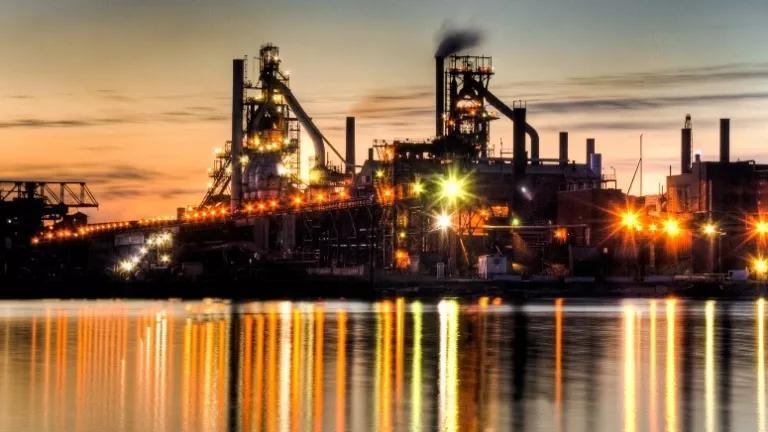Biden Administration Announces Landmark Industrial Funding
The U.S. Department of Energy rolls out unprecedented funding and technical support for potentially transformational industrial decarbonization projects.
Thirty three projects across eight industrial sectors announced today, will receive up to $6 billion in federal funds from the U.S. Department of Energy’s (DOE) Office of Clean Energy Demonstrations (OCED), catalyzing an additional $14 billion of private-sector capital.
The industrial sector accounts for a quarter of U.S. greenhouse gas (GHG) emissions. Historically, industrial greenhouse gas emissions have been largely left unabated, with policy-makers and businesspeople alike brushing off the sector as “hard-to-abate” – a code phrase for “let’s not bother.” Well, bother we shall if we want to fend off the worst impacts of climate change and limit average global temperature increases from exceeding 1.5oC.
During the last few years we have witnessed unprecedented research, innovation, and funding to decarbonize the industrial sector, primarily through programs in the Inflation Reduction Act (IRA) and Bipartisan Infrastructure Law (BIL). As we’ve written before, heavy industry produces the building blocks for a clean-energy economy: the cement, steel, and aluminum to build our schools, bridges, and clean energy infrastructure like wind turbines, solar panels, and electric vehicles. But much of heavy industry remains heavily reliant on coal used to fuel carbon-intensive processes that come at a hefty climate and local pollution cost.
The key to deeply decarbonize and clean up the industrial sector lies in technology innovation. Several low- to no-cost interventions are currently available—such as energy efficiency or the electrification of auxiliary processes—and worthwhile to pursue but will ultimately only marginally reduce emissions from carbon-intensive industries like steel and cement. Several technologies that can all but eradicate heavy industry’s carbon footprint are being developed but have yet to make the jump to full market availability. To put the industrial sector on the path to net-zero we must demonstrate at-scale and commercialize emerging technologies that hold the potential to transform industrial production. This is precisely the mandate and goal of the announcements made today for the Industrial Demonstrations Program (IDP).
OCED’s Industrial Demonstrations Program Explained
The program awards $6 billion of federal funding appropriated through IRA and BIL in 2022. This program is designed to stimulate an even larger influx of private capital requiring that half or more of the cost of each project be covered by non-federal funding. The intended outcome of this program is to catalyze first-of-a-kind large-scale decarbonization projects in the industrial sector in order to validate promising yet risky technologies and lock-in an early-mover advantage for U.S. manufacturers. The selected projects will enter cooperative agreements with DOE, which means that they will undergo engineering design, development, permitting and construction in close coordination with DOE over the next 3-7 years. Project funding will be split in tranches, each released once the project has reached specific milestones that DOE and the awardee agreed upon during award negotiations. To ensure that projects have a fighting chance of survival in the market, awardees are required to partner with buyers and establish offtake agreements so that the cleaner products are sold into the market and used in different applications.
Despite originally receiving over 400 concept papers from interested applicants, OCED opted for fewer and bigger awards -- $21M to $500M per project across 33 projects – staying true to their goal to demonstrate commercial-scale projects across a diverse set technologies and industrial subsectors that can spur follow-on private investments in the future. We’ve argued before that the best way for OCED to ensure it is making the most of its limited funding is to strategically focus on high-impact projects in critical sectors like steel, cement, and aluminum, which require advanced technologies to deeply decarbonize.
Here are four reasons why we think OCED’s approach will have lasting impact:
- One size most certainly doesn’t fit all: In addition to the fact that each industry is unique and thus will require tailored decarbonization solutions, there are also different needs even within a given industry. For example, solutions for new facilities will be different from those for retrofitting existing facilities, and the viability of each will depend on several unique plant criteria like location, plant age, and funding. The IDP program takes a portfolio approach which will demonstrate a suite of technology options across 8 industries, that can eventually be deployed separately or in tandem, to maximize decarbonization potential and help reduce local pollution.
- Higher project risk but high reward: OCED decided to make awards to pre-commercial projects that are currently too risky to access cost-competitive private capital. First-movers will demonstrate new technologies at scale and lock-in the know-how early on that will give them a competitive advantage globally. IDP provides an opportunity to modernize U.S. heavy industry and safeguard manufacturing jobs all around the country.
- Timing matters: Many of the U.S.’s industrial plants are aging and in dire need of modernization. This program will catalyze the types of projects that can transform the array of options available to companies as they make investment decisions in the next 10-15 years.
- Beyond greenhouse gases: In addition to being carbon intensive, aging, inefficient, coal-reliant heavy industrial plants are responsible for often severe local pollution. During the application process, OCED had instructed applicants to consider other impacts beyond greenhouse gas emissions, including community harms, air and water pollution, hazardous waste generation, and adverse health impacts. Projects with significant potential adverse impacts on any of these parameters should not be prioritized. The program provides an opportunity to demonstrate how greenhouse gas reductions and pollution reduction can and must be advanced simultaneously.
The Highlights…
We’ve spent the last three years studying the levers to decarbonize steel, cement, and aluminum and developing policies that will transform these three crucial industries. The IDP contains several promising projects within each of those industries.
All six cement & concrete projects announced hold a lot of promise to deeply decarbonize the sector. New technologies like Brimstone’s and Sublime’s promise to replace traditional limestone with carbon-free calcium silicate rocks as the raw material and novel production processes. These types of technologies could fundamentally transform how we produce the most used construction material on earth. IDP projects also include critical projects to demonstrate lower-clinker cements, like LC3, as well as carbon capture – a complicated and expensive technology that will likely be necessary to vacuum up remaining carbon emissions from traditional cement production processes.
The IDP also includes several very promising projects in the steel sector. The first is a commercial-scale facility in Mississippi that will demonstrate the potential of a modern ironmaking technology known as Direct Reduced Iron (DRI) to eliminate nearly all climate impacts of steelmaking when paired with clean hydrogen. DRI replaces coke and coal in iron production with hydrogen or natural gas. A second facility in Ohio, owned by Cleveland Cliffs, will convert to DRI, first relying on natural gas for the DRI process and then eventually using hydrogen in place of natural gas. Additional steel facilities have proposed electrification of fossil-fuel-based furnaces which, provided they are served with clean electricity, will help reduce those facilities’ emissions and pollution impacts.
Plans for a new primary aluminum smelter – the first to be built in the U.S. in almost half a century – are also promising since the new smelter could help address supply chain constraints for important products like EVs. Primary aluminum plants in the U.S. are aging, inefficient, and costly due to high electricity prices, and contribute to serious local pollution. This could be an opportunity to demonstrate a new standard and growth for a modern aluminum industry, but it will depend heavily on the energy source decisions that the aluminum company, Century Aluminum, will make in the coming months. The current proposal is silent on the company’s plan to access clean electricity – a critical component for greenhouse gas emissions reductions – and to meet existing pollution control limits. Additionally, there are two aluminum recycling projects that will improve productivity and efficiency and will redirect hazardous salt slag waste from landfills. These new techniques will help the secondary aluminum industry sustainably fulfill the U.S.’s growing demand for aluminum.
A final highlight is the broad range of projects across many industries involving the electrification of industrial process heat. With industrial heating comprising about 9% of the entire U.S. emissions footprint, it is encouraging to see a wide array of electrified technologies, including heat pumps, electric boilers, electric furnaces, and thermal batteries, represented in demonstration projects. However, sourcing this industrial electricity demand with clean power is vital. While several projects plan for the development of onsite renewable power and energy storage, others should ensure the procurement of clean electricity.
…and the Lowlights
There are some categories of projects that require especially close scrutiny. NRDC is concerned about the profound harms to people and the environment caused by the petrochemicals and plastics sector, including from facilities greenwashed as so-called “chemical recycling.” DOE must be especially vigilant about considering potential community harms, air and water pollution, hazardous waste generation, and adverse health impacts. We will be reviewing projects with an eye to these concerns.
A Critical Juncture for the Industrial Sector
The projects selected under IDP can be highly consequential, formative and impactful for American manufacturing. They will not only help commercialize the technologies critical to clean up emissions from heavy industry but also develop the technical knowledge and supply chains for technologies with global applications. These projects are a key piece in the broader puzzle for a new paradigm in industrial policy that centers emissions reductions to revitalize and modernize industries that have historically been under-invested in, dirty and in decline. IDP can be the shot that brings the ailing industry back to life.
Now the hard work begins to ensure that selected projects are designed and built well, benefit communities and reduce local pollution. To have a lasting impact, we’ll need a comprehensive set of policies including continued investment in innovation, procurement and other-demand creation policies, and climate-aligned trade measures for the new production paradigm of a cleaner, more modern, and less carbon-intensive industry to take hold.




